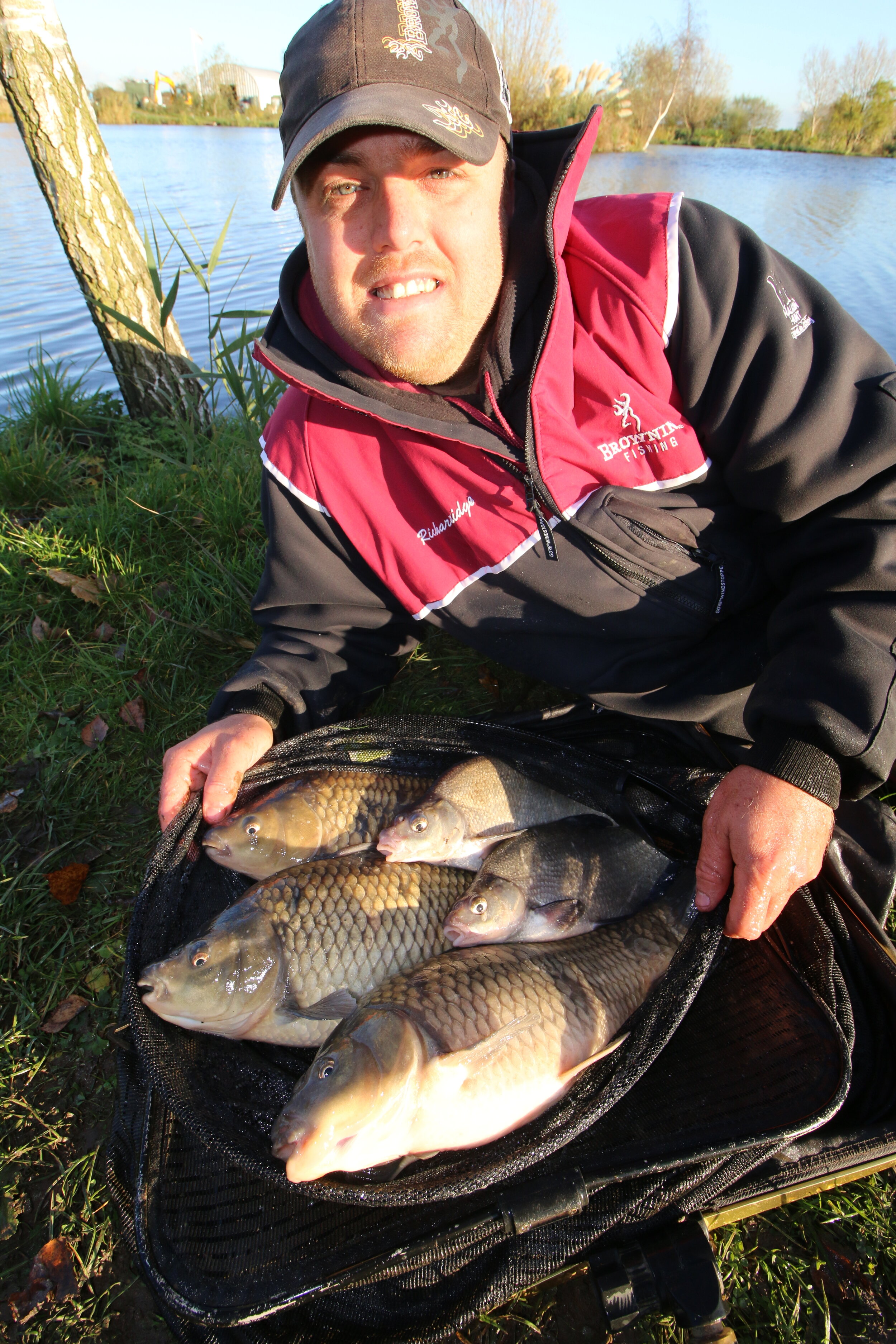Commercial fishing tips - Catch more on maggots
We’ve all fished with maggots at some point over the years, but have we been getting the most out of the bait?
Everything, from the way you feed to how you lay your rig in can make a massive difference, and making small changes can transform your winter form.
Browing-backed angler Richard Kerridge has used this classic bait to win plenty of matches over the last few months, fishing them on both the pole and the feeder.
We recently met up with him at Doncaster’s Lindholme Lakes where he revealed some of his top winter tips.
Keep it tight on the Pole
“Today we’re on Laurels Lake, where the target fish are mainly F1s with odd carp mixed in as well as good head of silvers.
“Many people see maggots as a small fish bait, but by altering the way you present your hookbait it’s possible to get through to the larger specimens.
“I’ve kicked off the session by tapping in a few maggots around 14 metres out, and have placed my rig over the top of the feed.
“Generally, I prefer to feed with a pot on the pole as it allows you to keep your bait nice and tightly grouped.
“The less you feed, the higher the chance is of a fish finding your hookbait, and you can get them competing for small amounts of bait trickling through the swim.
“The other advantage of maggots is that they fall slowly through the water, which can provoke a feeding response from the fish.
“This is why I use red maggots in winter - they create more of a silhouette as they fall through the water.”
Laying the rig in
“It hasn’t taken long before I started catching chunky F1s - however small silverfish moved into the peg and made it difficult to get the hookbait down to the better fish.
“To combat these I set up another line to my right and managed a few more F1s before the tiny roach moved in again – time to alter my rig.
“The first thing I did was change my shotting pattern from a bulk and two droppers to a strung bulk close to the hook, which has bombed my hookbait to the deck.
“Secondly, I’ve dropped my rig in before tapping in a few maggots from my pot. The silverfish go crazy for the falling maggots, but by dropping my hookbait in first I can sneak my hookbait past them before introducing my bait.
“This has really made a difference today, and I’ve been able to single out the quality F1s and skimmers that were sat on the bottom.
“On a side note, I always like to fish two lines in in winter, as this allows you bounce between them and keep fish coming.
“By keeping two lines topped up wiyth sparse feed, I can be confident the fish will not dissappear from the swim.”
Fish the feeder too!
“The maggot feeder is a classic river tactic, but it can be devastating on commercials.
“I’ve had some really good results fishing it around 16m out in recent bomb and feeder only matches.
“I call this my ‘positive line’, where I loosefeed throughout the session, feeding two small pouches of bait straight after each other.
“It’s important to not feed too far out, as this spreads your bait over too large an area - you need to make sure you only fish where is comfortable for you.
“I don’t fish to a line clip here, as it’s worth casting around the feed area to pick fish off.
“In addition, I also chuck the feeder on a ‘negative line’, which is usually towards any feature in the peg.
“I’ll fish with a clip here, as this enables me to fish accurately and to build a bed of bait.
“Today I’ve had a good run of fish on my positive line at the end of the session when the pole swim began to dry up, which just goes to show the effectiveness of this tactic.
“Come the end of the day I reckon I’ve got around 50lb of quality F1s and skimmers, all on the humble maggot.”
Light tackle is key
On the pole I use fairly fine wire size 16 and 18 hooks with a PTFE coating to keep them nice and sharp. These are tied on 0.10mm Cenex Classic Mono.
For feeder fishing I use hooks of the same size but in slightly stronger patterns, and these are tied on 0.13mm Cenex fluorocarbon hooklengths. A Browning Stretch 7 yellow elastic balances the setup nicely.
Tangles are a typical issue on the maggot feeder, and fluorocarbon helps to avoid these as it’s stiffer than mono, so kicks my hookbait away from the feeder.
I also use shrink tubing on my feeder link, which again helps to reduce the line from catching on it.
Feeder modifications
I enlarge the holes in some of my feeders to allow the maggots to crawl out quicker, which is great for getting a bit of bait down early in the session.




